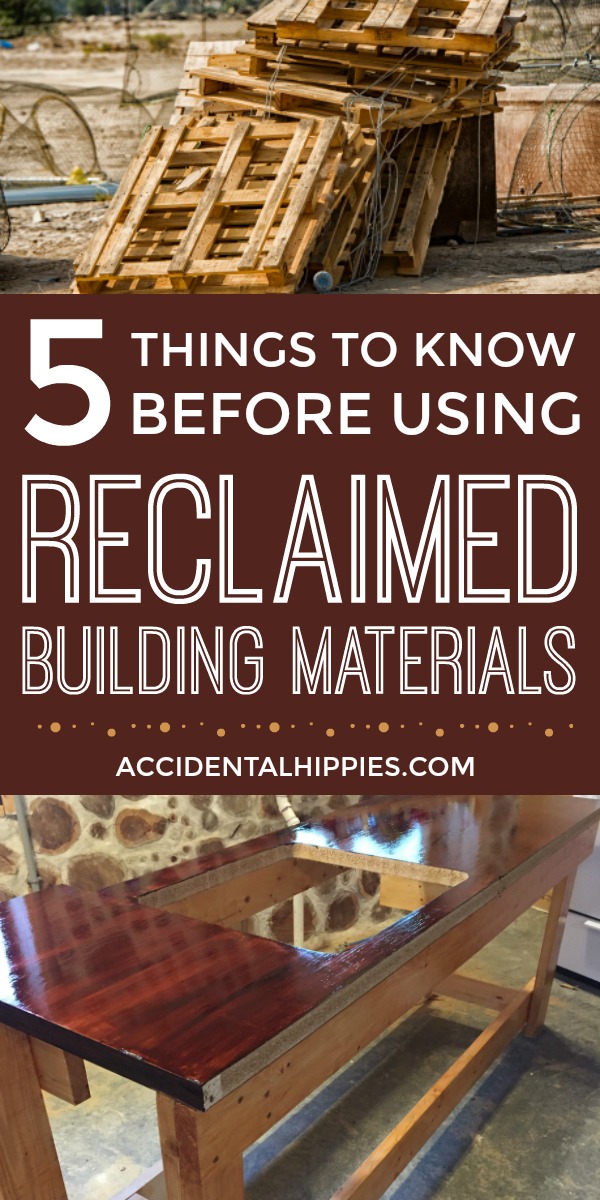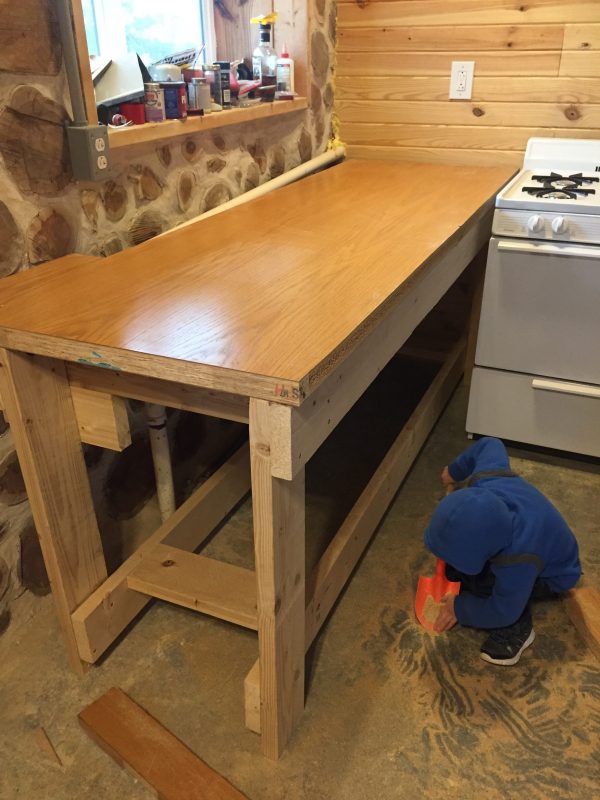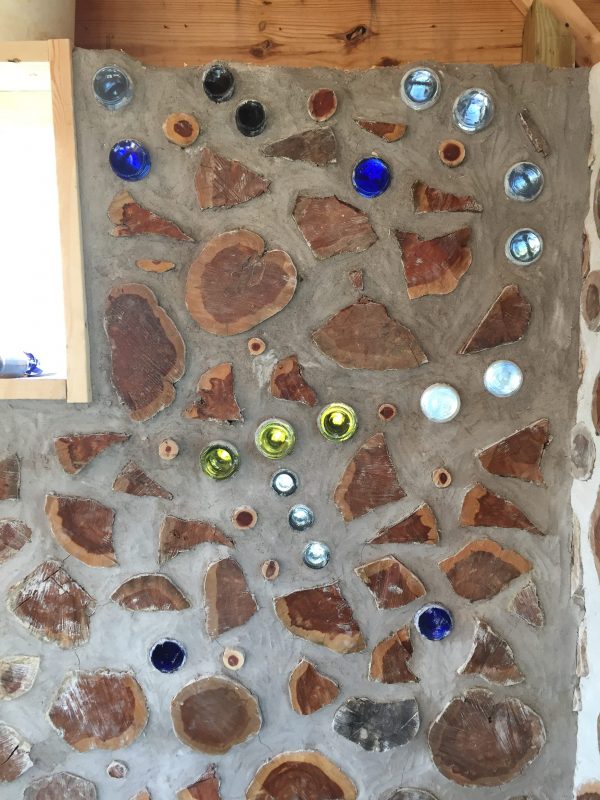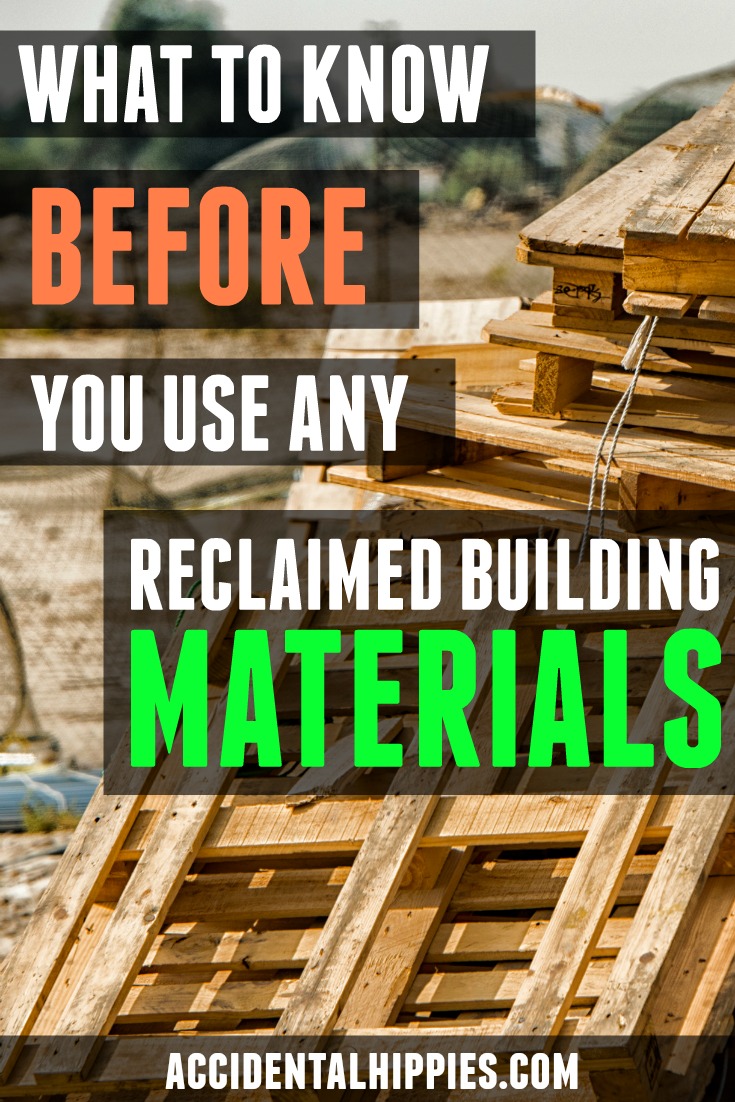Disclosure: I sometimes earn products or commissions from affiliate links or partnerships on my blog. I only recommend products and services I trust to serve you. Learn more.
Building an ecologically friendly home of your own is a great opportunity to use recycled and reclaimed building materials. Not only can you often get these materials for cheap or free, you’re saving a lot of materials from being tossed in a landfill.
But before you go out and grab a bunch of free pallets to make a plank wall, listen up.
If you aren’t careful, you can end up with items that are inefficient at best and toxic at worst. So what do you look for when you go to buy reclaimed building materials for your home build? And how can you make sure you don’t waste money on materials you can’t even use?
We built our own home out of cordwood masonry and used a lot of reclaimed and recycled materials in the process. We made a lot of strategic choices in deciding what to get reclaimed versus buying new and learned a lot along the way.
From safety to quality, here are 5 ways to get the best reclaimed or recycled building materials for your home.
1. Check the condition of the item.
If you said, “uhhh DUH” to that, then I’m with you. This should be the obvious first place to start, but it is amazing how many people overlook this when they’re doing a quick Craigslist deal in a parking lot.
Whether you’re looking at a set of kitchen cabinets taken from someone’s remodeling job or ceiling fans at the Restore, it’s worth noting the item’s condition and asking:
- Does the item show significant damage or rot?
- Is the damage only cosmetic or will it negatively impact its function?
- Can I repair it?
- Is it even worth repairing?
For example, we bought a lot of 10 windows for $300 from some guy on Craigslist. They were removed from a home that was getting a pretty significant window upgrade. A quick glance showed that they looked okay, but a more detailed inspection would have shown that MOST of the windows had worn seals and gaps between the panes. Of the ten, three ended up broken before we could even use them. As for the other seven we’ve already spent extra money to replace four of them and will soon replace the other three.
Moral of the story: we could have saved $300 by simply not buying these from the start. We replaced them with misorders that were still in their shrink wrap at the surplus store, which leads us to…
2. Look for misorders or overstock.
Doing this can save you some serious money while getting you higher quality items.
Take our replacement window example from number 1: they were all brand new vinyl windows with high-efficiency glass that were still in their shrink wrap with original labels. We found them at a local builder’s surplus store at a pretty deep discount compared to what we could have paid for them new at the big box stores or local supply companies.
The reason they were misorders? Whoever ordered them originally got them in the wrong trim color. The COLOR.
If you’re like us and you’re building an eco-friendly home, then you probably don’t give two hoots about the color of the trim. They were the right size and type for our install, so we jumped at the opportunity.
Related: 7 Cool Ways Our Readers Saved Money on Building Supplies
3. Use quality materials in unconventional ways.
Sometimes it isn’t simply a matter of finding the exact thing you need, but finding a high-quality item that can do the same thing for less effort or money.
One easy example from our build was using a reclaimed solid core door as a countertop in our kitchen. We got this on a discount day at our local Restore for $20. It’s sturdier and nicer looking than any reclaimed countertop I’d found, and we could cut it into a specific shape to fit our odd space. Here’s a progress shot:
For another example, we saved roughly 300 bottles from the landfill by gathering them from local wineries (and friends too!) and creating designs with them in our cordwood walls like this:
But even more basic trends are on par with this idea of using unconventional materials in new ways. The trendiest way to do this right now is by creating pallet walls or using reclaimed barn wood.
The trick here though is to make sure you’re using materials that can withstand your design AND that are safe to use. Which brings me to…
4. Make sure your reclaimed or recycled materials are safe!
Lead
Imagine finding out that your awesome $100 vintage clawfoot tub tests positive for lead in the enamel. Yep, that’s us. Fortunately, it’s only an issue if you ingest the water, as you can’t absorb lead through the skin, but when you have little kids it’s a much bigger concern. Now we have to deal with either encapsulating the tub or finding a new tub without lead.
Lead paint could be found on reclaimed wood and other home items. Your safest bet is to use a Lead Check swab and pass on any items that have it. Remember, there is no safe level for lead in the body.
Pallets
Using pallets for projects around the home and garden is fun, trendy, and a great way to save natural materials from landfills. BUT not all pallets are treated equally. While most pallets you’re likely to find are either Heat Treated (stamped with HT) or Kiln Dried (KD), some may have been treated with Methyl Bromide (MB) and are toxic for use. Even if your pallet wasn’t treated with this substance, it may have been used to transport items that could leave toxic or other undesirable residues.
If you’re working with pallets, check out this super informative article about pallet safety.
Treated telephone poles or railroad ties
In a similar vein, people often ask me if they can build a cordwood house or standard log home with discarded telephone poles. Unless you’re getting untreated poles, I have to answer NO because they have been treated with either pentachlorophenol (Penta), creosote, copper naphthenate (CuN, and arguably the best of the bunch), or arsenicals (copper chromium arsenate or CCA). While the EPA has approved these chemicals for outdoor use with minimal human contact, some of them are potential carcinogens and nerve agents that could cause birth defects or reproductive harm.
You can read more about the negatives here or get the safety data from the North American Wood Pole Council here. You can also Google them all individually if you really feel like going down that rabbit hole.
5. Know when to buy new instead.
While I wish I could have made my entire house out of all reclaimed or recycled materials, it’s just not feasible to do that, especially when you’re being held to strict code enforcement like we were.
Sometimes you’re required to use a certain material to meet building code. Other times, materials might be unusable once they’ve been uninstalled and simply can’t be reclaimed for their original purpose. And better yet, new materials might be your best choice when it’s for something critical like your foundation or building frame, but that isn’t always the case. Do your research and defer to your better judgment or gut instinct. If you’re completely unsure, ask a trade professional or building inspector for advice.
We built our own cordwood house using mostly cheap or free reclaimed building materials. You can learn more about it here.
If you’re thinking of building your own eco-friendly home, subscribe to get our newsletter and our free homestead builder’s quick-start guide:




